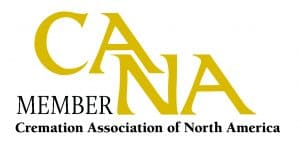Cremation is now the preferred disposition choice for the majority of Americans. Yet, there can still be some confusion for families about exactly what a cremation service entails, and how to choose the ‘right’ cremation option for their needs.
In this guide, we are going to explore the differences between a traditional cremation service and a direct cremation service. We will explain the differences, the pros, and the cons, and explore what this means in terms of cremation pricing. To better put this into context, we will also look briefly at the impact of the shift to cremation on the funeral industry, and how to navigate industry “up-selling” tactics.
Firstly, let me state that direct cremation is the industry term used for a cremation with no additional services. No viewing, visitation, or funeral ceremony. It is just cremation, as simple and no-fuss as it comes. It enables the funeral home to offer the most economical cremation option they can with minimal costs. A direct cremation can be arranged for between $695 to $995 in most areas (with some exceptions).
Why Choose a Cremation Service?
Cremation has become the popular disposition choice for families. Two main reasons have dictated this shift from traditional burial to cremation. Firstly, and probably the main reason is cost. A cremation funeral saves significantly on the total funeral costs. The National Funeral Directors Association (NFDA) put the median cost of a traditional funeral today at around $9,000. Whereas a cremation funeral (even with full services) is nearer to a $4,000 price tag.
More importantly, you can arrange a simple basic cremation service (with no services), for under $1,000. This is the direct cremation service we referred to. In many cities, the average cost of a direct cremation is $795. What we are not being told (and it is hard to find the statistics) is what percentage of all cremations conducted are direct cremations.
Data shared from the DFS Memorials network of low-cost cremation service providers suggests that direct cremation accounts for the majority of cremation cases. Some cremation service providers have reported that their direct cremation cases account for 80% of all their cremations.
The other main reason for the shift to cremation is convenience and flexibility. Families were already deciding that cremation was an easier, ‘no fuss’ option. Especially if families were dispersed and a family gathering was not an important need at the time of a loved one passing.
The Covid pandemic has increased this demand for a simple direct cremation service with no gathering or services.
So, in summary, the decision to choose cremation can be largely considered one of cost and convenience.

What is included in a Direct Cremation Service?
A direct cremation service option includes the basic services of the funeral home to collect the deceased, refrigerate the remains while securing the legal permits and death certificates, conduct the cremation, and then make available the cremated remains for the family to collect. The whole process generally takes 7 – 10 days if all the paperwork can be filed without any issues, and the crematory schedule is open.
There can sometimes be additional fees added to a direct cremation service. Some of these may be optional choices you can make. For example, selecting a cremation urn, or choosing to have the cremated remains mailed to you.
Other fees may be added dependent on the circumstances, such as if the deceased was overweight or had a pacemaker. You can read more about potential ‘hidden’ costs in this article about the least expensive cremation service.
How do you find a low-cost Direct Cremation near you?
If you have decided on just a simple low-cost cremation, and you want to find the best price cremation provider near you, the DFS Memorials network of cremation providers is a good place to start. The DFS Memorials website lists local affordable cremation service providers including their price for a direct cremation. This can quickly enable you to find who offers an affordable direct cremation and what you can expect it to cost.
You may also find funeral home Google advertisers in certain areas who are openly offering their direct cremation package online. Both these tools can help you get a good idea of what is available to you locally and help you gauge what the average cost is for a direct cremation in your area.

What is included in a Traditional Cremation Service?
A traditional cremation service is very similar to a traditional burial. However, instead of the casket being transferred for burial after the service, the deceased is transferred to the crematory for cremation.
All the usual ancillary ‘trimmings’ associated with a traditional funeral may be part of the service. The funeral home will assist you in organizing a ceremony, a visitation beforehand (if required), you can choose a casket for the service or rent a casket, and arrange flowers, catering, visitor books, prayer cards, etc. Often, these days funeral homes will also offer live-streaming of the funeral service for those who cannot attend in person.
The Pros and Cons of different Cremation Service Options
Deciding what type of cremation service you want can often be determined by weighing up the pros and cons of the options, costs, and what your funeral needs are.
Direct cremation
Pros:
- Least expensive cremation option available.
- Eliminates many ancillary funeral expenses.
- Can be arranged remotely without the need to visit the funeral home for arrangement.
- Can be arranged from out-of-state & cremated remains shipped to the family for a memorial service elsewhere.
- Enables the disposition of a body to be handled in a quick, efficient, yet dignified manner. This can enable the family to defer a funeral memorial service until a later date.
Cons:
- You may have to complete online forms to submit all the information required to process the cremation.
- The cremated remains are often returned in a simple temporary cardboard container, unless you add a cremation urn to your direct cremation service package.
Traditional Cremation Service
Pros:
- A funeral service is held at the time of passing and can help families to say goodbye.
- It will cost less than a traditional burial service.
- More funeral homes are offering rental caskets for a cremation service to help reduce casket expenses.
Cons:
- As you are conducting a traditional service with the help of a funeral director, it can be easy to find that ancillary expenses can add up.
- A traditional cremation service is generally held fairly soon after the deceased passed. A direct cremation or cremation memorial can enable the family to defer the need for immediate services.
How popular is direct cremation?
I believe direct cremation is becoming the populous cremation choice. As mentioned earlier, we know the majority of families are now choosing cremation (56.1% in 2020 according to the Cremation Association of North America). And the forecast is for this trend to continue. The economy and the pandemic have impacted and increased demand for direct cremation services.
Seniors & baby boomers considering their own final wishes seem to be more interested in direct cremation, wanting a plan that is simple, no-fuss, and affordable. In many cases, to ensure their dependents do not have to worry about future funeral costs or plans.
Some of the bigger death care companies in the U.S. have hedged their future business plans on the growth of direct cremation. Service Corporation International (SCI) took a 70% stake in the Neptune Society in 2011 and has significantly expanded the brand and the locations since then. The Neptune Society is solely a direct cremation brand.
Foundation Partners Group (FPG) has been strategically acquiring strong cremation brands nationally to strengthen their dominance of the cremation market.

Cremation Services & Funeral Homes: How do funeral service providers compare?
Historically, the funeral industry has been distinctly different from other consumer markets. Funeral homes were slow to embrace the advent of technology and the impact of the internet on their industry. They were used to receiving business by traditional marketing methods, and their reputation and location in a community.
Even as funeral homes started to recognize the impact of the internet, still many were (and continue to be) reluctant to openly disclose their funeral prices on a website. Read more in this post about Why do so many Funeral Homes not display Funeral Prices on their websites?
Despite the FTC ‘Funeral Rule’ there are still reports annually of non-compliance by funeral homes who do not clearly provide General Price List information to families on request.
So, this can still make it hard for funeral consumers to easily compare cremation service options from different funeral homes. Especially, when grieving and trying to make decisions about a funeral in a short time frame.
And, it IS confusing, as prices can be very different from even a small selection of local funeral homes.
As I mentioned above, there are tools and services that can help a family compare funeral homes and prices, and even help direct them to local affordable cremation services. Google search results (and advertisers) can help provide some information on local services and sometimes costs. DFS Memorials provides a listing of a low-cost cremation service provider and their direct cremation package price. There are also a few other funeral price comparison websites that disclose cremation service costs, although in some cases you are required to submit your details to be able to get a quote. [For example: Funeralocity, Parting, EverPlans]
How has the cremation trend impacted on the funeral industry?
Largely, the shift to cremation has signaled an era of declining revenue for funeral homes. An average traditional burial case was valued at around $9,000+, whereas an average cremation case is valued at $3,000+. And, the grim reality is that IF indeed direct cremation is the majority preference for families, then the average case value is now less than $1,000.
This article we published explored How the cremation rate is affecting the death care industry.
Explaining that as case values declined the likely outcomes were funeral home closures, acquisitions by funeral groups, expanded service areas for those who needed to increase case volume to make up for lost revenue, and of course, all efforts to increase revenue by selling more ancillary cremation products and services. A tactic that is often referred to in the industry as “up selling”.
This is often where families feel pursuing the direct cremation service option removes them from the conundrum of making too many optional decisions about a cremation service. And, eliminates the exposure to the cremation cost increasing as a funeral home attempts to increase the revenue per case.
The shift to direct cremation must be extremely disempowering for many funeral directors who believed their profession as ‘last responders’ a sacred service to families. That a family needed a funeral service to grieve, and the more extravagant the better.
We are entering an era of division in the death care process – a separation of disposition and memorialization – whereby the funeral director is now mainly servicing the disposition element. A simple direct cremation disposition at minimal cost with families opting to either not have a memorial tribute, or to host their own personalized memorial.
In summary:
Traditional Cremation is as the term suggests a more ‘traditional’ service option, but as our bonds to tradition are eroding, it seems Direct Cremation or even a Cremation Memorial are becoming the preferred ‘less fuss’ (and lower cost) alternatives.
Direct cremation price packages are often much clearer and ‘cut and dry’ to determine exactly what you are getting in a service package.
A direct cremation can often be arranged over the phone or online – making it easier to make arrangements from the comfort of home, and limit exposure to up-selling pressure from a funeral home.
Visit our Resource Section on Cremation for further reading.

